Lisa Niver's Blog: We Said Go Travel, page 481
July 29, 2013
Exploring the English County of Kent
Kent, or The Garden of England as it’s known, is the most South-Easterly county in England. As the nickname implies, it boasts a stunning, lush landscape full of orchards and green fields. It’s not party central but if you’re like the majority of people, you’ll want to actually relax and de-stress on your well earned break from work. Kent is the perfect place for just that!
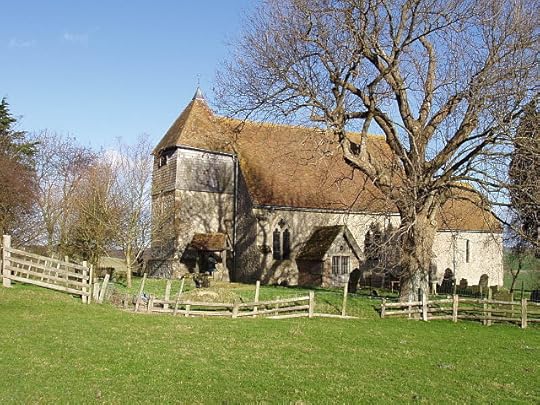
Personally, I love camping trips and Kent has an abundance of great locations to base your camping holiday, or you move around as well. If you’re doing the traditional English caravanning holiday, Kent is pretty much designed for you. It’s the warmest part of Britain so the chances of the sun being out is especially good and a lovely bonus for campers!
Most people will be coming from a north-Westerly direction, down the M2 or M20 so you can start your Kent trip in Dartford or Sevenoaks and go around in a clockwise or anticlockwise direction. You can pick up the coast road either side and follow it around.
Be forewarned, campsites in Kent are popular and moreso in the height of summer which is obviously the best time to go. Other great times outside peak are September when kids are back to school so you might prefer the quieter atmosphere. Spring is also a beautiful time to visit.
Things to do in Kent
Beaches
If the weather is good, you can take advantage of the many great beaches along the Kent coastline. The best in my opinion is the Camber Sands (technically East Sussex but let’s not split hairs, it’s a stone throws from Kent). A fantastic day out for all the family, load up a picnic in the car and you’re good to go. Let the kids run amok in the sand dunes while the parents kick back and relax on the beautiful sandy beach.
Cliffs of Dover

By Immanuel Giel via Wikimedia Commons
The famous white chalk cliffs of Dover are one of the iconic images of Britain. A major location in the Battle of Britain, don’t miss the opportunity to stand on the top and gaze over to France, which you can see on a nice clear day. The location for many an invasion over Britain’s long, active history, it makes for a thoughtful experience.
Dover Castle

By Jake Keup via Wikimedia Commons
The “Key to England” has a long long history, and the roman lighthouse built on the site is thought to be one of Britains oldest buildings. The largest castle in England is a sight to behold and a fascinating day tour which runs through it’s incredible history. It is a very popular tourist stop now and you can even visit the secret runnels built underneath which was an important planning are during WWII.
Shepherd Neame
The oldest brewing company in Britain is certainly worth a visit if you’re thirsty and over 18 of course. Taking advantage of well earned title The Garden of England, orchards and hops have long been grown and cultivated in the South East county. Breweries are plentiful and there is even more surprisingly a vineyard or two. English wine, not something you hear of everyday.
All in all, when it comes to a holiday break in the South of England, you really couldn’t go wrong with a self-catering holiday in Kent with Freedom Holiday Homes. A short trip from London and you’re in the heart of the countryside and on the coastline at the same time. Give it a try and you’ll be rewarded!
The post Exploring the English County of Kent appeared first on We Said Go Travel.
Ireland: Land of the Horse
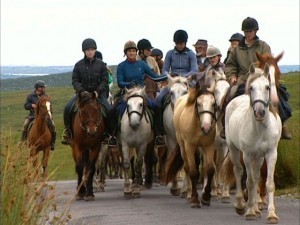 Unbridled Freedom in the Hills of Connaught
Unbridled Freedom in the Hills of Connaught
I journeyed to Ireland to explore the Land of the Horse from the saddle. I have spent every day of my life with horses; nothing compares to the joy of riding. It is a euphoric experience that offers a freedom all its own.
Traveling through Galway towards my destination The Connemara Trail, a land of dramatic contrasts emerged. Lush green pastures, brilliant wildflowers, soggy peat bogs, and magnificent mountains with rock-strewn hillsides presented a pastiche of austere epic beauty. Old castle ruins stood as a testament to an earlier time in history. The landscape gracing my eyes has inspired writers and artists through the centuries.
A sense of wonder took charge of me as I gazed out the bus window. Horse lovers from all over the world filled the other seats. Their enthusiasm bubbled out in a rise of international tongues. I could not speak, and thus began a journey inward.
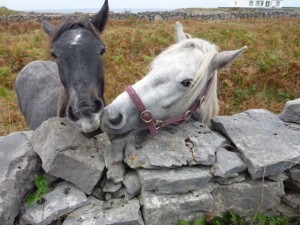 The bus slowed, sheep crossed. In Connemara, the wooly ones have the right of way. Our local driver yielded, and he announced, “Just a few more minutes’ folks”. It took me a moment to decipher the words from his Gaelic accent.
The bus slowed, sheep crossed. In Connemara, the wooly ones have the right of way. Our local driver yielded, and he announced, “Just a few more minutes’ folks”. It took me a moment to decipher the words from his Gaelic accent.
Soon after, a muffled, “OK, here you go, here ya go folks”, accompanied by an abrupt stop and hand gesture to disembark. We arrived ready to ride. I did not see a stable.
On a vista, across a steep rocky valley, a colorful group of horses grazed near old ruins. I expected Liv Tyler to appear at any moment.
Our guide, Willie Leahy, a legendary trail master, instructed us, “grab a bridle and get a horse”. The tack room consisted of two walls, and a partial roof of a stone structure built into the hillside. Lucky to be among seasoned horse people, this seemingly daunting task [catching loose horses] went along like clockwork.
Soon saddled we began the world’s oldest trail ride atop Ireland’s only native breed of horse, the Connemara, of course.
My first pony, Snowflake, was a Connemara. She taught me to ride. Three decades later, across the Atlantic Ocean a member of her clan was co-creating yet another milestone in my life. It was a very cathartic moment.
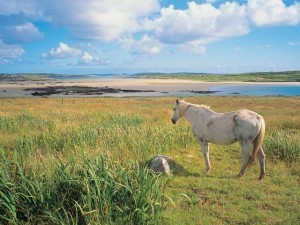 The harsh terrain of the West Coast is intimidating to negotiate on horseback. Our mounts swiftly revealed their strong and sturdy qualities. They have endured the ruggedness of this environment since the 4th century B.C.
The harsh terrain of the West Coast is intimidating to negotiate on horseback. Our mounts swiftly revealed their strong and sturdy qualities. They have endured the ruggedness of this environment since the 4th century B.C.
Willie assured a handful of nervous riders, “Connemara-bred horses can go through, get around or climb over anything”. He has guided riders through the hills for over 40 years.
As I rode, a panorama of magical and utterly wild countryside enveloped me. It is a dramatic, mysterious feeling to simultaneously experience the personal exhilaration of riding in this setting, coupled with County Galway’s history of tragedy and inspiration.
The trail took us on “famine roads” past the ruins of abandoned village cottages. These small winding roads are a haunting reminder of the terrible potato crop failures in the 1840s. The Irish population was decimated. Over one million lives were cut short. In 1847, Relief Committees gave the starving Irish such roads to build. Where the roads end, the Irish died. Stepping back onto grass forced me into silence. I offered a bowed heart as I envisioned the horror the Irish must have endured.
Below the trail is the Quiet Man Bridge, made famous by the 1950s John Wayne and Maureen O’Hara movie bearing its name. Director John Ford won an Academy Award.
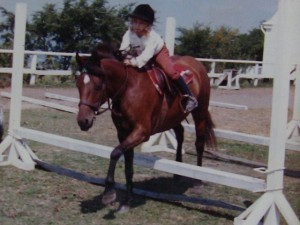 As midday approached we prepared for lunch in a craggy meadow. To my amazement, we completely untacked the horses. Bridles off, saddles off, and no halters — I have this on video! For an hour, without any ties, the herd and the humans lunched … together.
As midday approached we prepared for lunch in a craggy meadow. To my amazement, we completely untacked the horses. Bridles off, saddles off, and no halters — I have this on video! For an hour, without any ties, the herd and the humans lunched … together.
Not long into our fine dining experience the Atlantic delivered gales of rain. Quickly, we tacked up.
A symphony of hoof beats built to a beautiful crescendo as we moved in one harmonious unit. The staggering sights before me, the horse beneath me, and the history we rode through enriched me forever.
The great Yeats, McDonagh, Wilde, and Joyce have each expressed the affect of Ireland’s wild west coast in their works.
To really stop, look, and appreciate the bleak rugged beauty of this land is to dance with pure freedom … unbridled freedom in the Hills of Connaught.
About the Author: Susan Kayne is the creator of Unbridled TV, an equine lifestyles TV series broadcasting on HRTV. She spent several weeks riding in Ireland tape Unbridled TV. Connect with her on Twitter @Susan_Kayne.
The post Ireland: Land of the Horse appeared first on We Said Go Travel.
California Back Road: Quatal Canyon
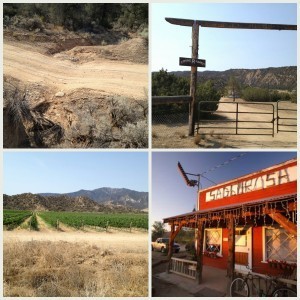 There are places I’ve been to that are out of time. Places that are imbued with spirit, and although man has touched it with roads and trails, it remains itself and deeply authentic, a place that takes me back in time. This is what I am drawn to, what I hunger for. To drop down into another realm that is all encompassing, overpowering – to feel it, see it, smell it and open to it.
There are places I’ve been to that are out of time. Places that are imbued with spirit, and although man has touched it with roads and trails, it remains itself and deeply authentic, a place that takes me back in time. This is what I am drawn to, what I hunger for. To drop down into another realm that is all encompassing, overpowering – to feel it, see it, smell it and open to it.
This place is only two hours from where I live, it exists in Central California’s Los Padres National Forest, it is not easy to get to or go through, but worth the effort, it is a journey to an ancient and vital place.
I enter off a paved highway at Hudson Ranch Rd., to the east soar Kern County’s tallest peaks, Cerro Noroeste and Mt. Pinos and San Emigdio. To my right is a washed out sign with pealed back paint that shows the way – Quatal Canyon -a bright white arrow points left to forest road 9N09. The entrance is plain, it is easy to miss, an allee of Pinyon pines surrounds a curving road and pulls me in, for I know enchantment lies ahead.
I cross over the highway and slow down my all wheel drive car onto the stone scattered dirt road. Here motionless grey green Pinyon pines envelope me. Without warning, oaks rise up from the canyon floor, soon the Pinyon branches turn dark and wild and hang from the sandy hillsides, roots exposed, no rails to guard the eroded road that drops off steeply below. Around another curve emerge red stained hills and contrasting sage green shrubs above and around the scoured formations.
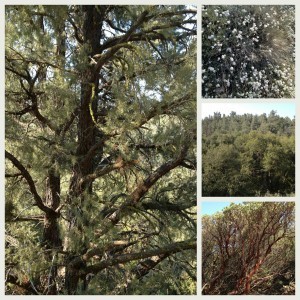 Suddenly a hairpin turn appears, I must pay attention and slow down even more which is why I am here, to unhurry my pace. On my right I see the brilliant white California buckwheat, the pale yellow plumed swords of Yucca whippelei punching up to the sky, the maroon smooth bark of twisted Manzanita and smell the fragrant mountain sage. This thrills me, I design landscapes and outdoor spaces, I have studied them in books, and seen them in square plastic pots, but this is where they live. They have survived flash floods, the delicate purple blue lupine have struggled through rocky places to stand upright and courageous. The ancient Chumash wilderness envelopes me, I am part of it, I feel alive in it.
Suddenly a hairpin turn appears, I must pay attention and slow down even more which is why I am here, to unhurry my pace. On my right I see the brilliant white California buckwheat, the pale yellow plumed swords of Yucca whippelei punching up to the sky, the maroon smooth bark of twisted Manzanita and smell the fragrant mountain sage. This thrills me, I design landscapes and outdoor spaces, I have studied them in books, and seen them in square plastic pots, but this is where they live. They have survived flash floods, the delicate purple blue lupine have struggled through rocky places to stand upright and courageous. The ancient Chumash wilderness envelopes me, I am part of it, I feel alive in it.
Quatal Canyon, according to legend, is named after a great Chumash warrior. It is a giant desert wash formed from waters ripping down from Cerro Noroeste (Mt. Abel) and from severe erosion created by nearby San Andreas fault lines.
I stop my car, I get out and stand at the road’s edge and listen to the silence. I am alone, I have seen no one. The canyon wash drops down below. A screech breaks the quiet, it is a Western scrub jay who lives in this dry lowland, perched on a scrubby oak, then I see a jackrabbit with giant ears hop between tall grasses on the canyon floor. Slowing down, getting still.
 Back on the road runnels suddenly appear, deep narrow channels created by the powerful flash floods that are carved out from November to April. I take it slow and clear one after another. Then the road becomes a roller coaster of humps that are crazy and fun to ride. Soon the road straightens out and a quiet isolation descends. I pass western style post and beam gateways like Crying R Ranch and shortly a sign tells me I am leaving the Los Padres National Forest. This rare passage is almost at an end. A concoction of oil and dirt smooths out the road and signs of civilization start to appear. Incongruous emerald green vineyards spread out below fractured arid hills, here miles of cabernet grape vines are planted.
Back on the road runnels suddenly appear, deep narrow channels created by the powerful flash floods that are carved out from November to April. I take it slow and clear one after another. Then the road becomes a roller coaster of humps that are crazy and fun to ride. Soon the road straightens out and a quiet isolation descends. I pass western style post and beam gateways like Crying R Ranch and shortly a sign tells me I am leaving the Los Padres National Forest. This rare passage is almost at an end. A concoction of oil and dirt smooths out the road and signs of civilization start to appear. Incongruous emerald green vineyards spread out below fractured arid hills, here miles of cabernet grape vines are planted.
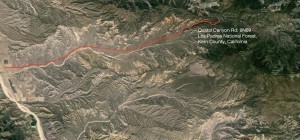 The road ends at Highway 33, turning left and south is Ojai, turning right and north is another destination, a eccentric hole in the wall inn where gold medal wines are poured and thick steaks sizzle on a grill, called Sage Brush Annie’s.
The road ends at Highway 33, turning left and south is Ojai, turning right and north is another destination, a eccentric hole in the wall inn where gold medal wines are poured and thick steaks sizzle on a grill, called Sage Brush Annie’s.
My journey through time is over, I am buoyant, I have been somewhere primal and I feel full of its enchanted light.
About the Author: Linda Jassim earned her Masters of Fine Arts from the American Film Institute in Communications and Film Directing and received a Masters of Landscape Architecture from the University of Southern California. Linda is a landscape designer and has worked on residential and commercial projects in the Southern California region. She was editor of “The Power of Gardens,” a monograph of landscape designer Nancy Power’s life work. She has published articles about architecture and urban issues in print and online. Linda also has had an extensive career as an EMMY award winning TV and film Producer and Director.
The post California Back Road: Quatal Canyon appeared first on We Said Go Travel.
India: Lost and Found in Mumbai
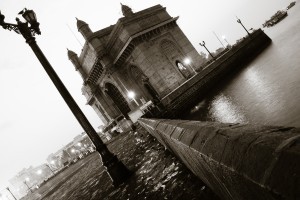 LOST AND FOUND IN MUMBAI
LOST AND FOUND IN MUMBAI
By Arti Agarwal
I was an oilfield engineer; the kind who wear muddy, greasy coveralls, work with hefty tools in the sun and the rain, have big degrees from an IIT (Indian Institute of Technology), work on five computers all at the same time, monitor data from the earth in their sleep, live on a drill-ship, attend meetings with clients, get regular firings from their bosses and clients, and are wondering why they do all this at the end of every day.
I lived in Mumbai, in a manner of speaking – since I was in Mumbai for only a few days in the whole year. I used to suffer from migraines, which became more and more frequent as the number of colleagues and trainees working with me on the drill ships became fewer and fewer, until a day saw me lying numb in my bunk bed from ceaseless pain, with a completely new trainee popping into my room every hour asking me what needs to be done.
I was not a worker. I was a creative human being, who yearned for a meaning to life. I was a qualified architect and a skilled photographer, and every bone in my body screamed to be released from the bondages of the insensitive management of my oilfield services company.
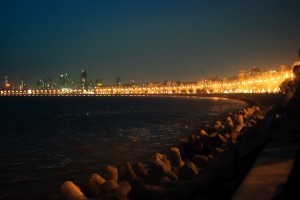 As the chopper was taking off from the drill ship, I looked at the waves in the sea, at the steel equipment, at the people walking, working, smoking on the rig. I saw the endless deep blue of the sea surging up in front of me as the chopper gained altitude. “I am not coming back”, I whispered to myself. I didn’t tell it to anyone else just yet, I didn’t want to jinx it.
As the chopper was taking off from the drill ship, I looked at the waves in the sea, at the steel equipment, at the people walking, working, smoking on the rig. I saw the endless deep blue of the sea surging up in front of me as the chopper gained altitude. “I am not coming back”, I whispered to myself. I didn’t tell it to anyone else just yet, I didn’t want to jinx it.
The flight landed in Mumbai as I woke up with a start. I had not slept well for days. One chopper and two flights, and from being lost somewhere on a ship in the Bay of Bengal, I was now standing in the pleasantly cool breeze of Mumbai, already feeling more and more sure about my decision.
–
I was standing in front of the Express Towers on the Marine Drive, in my running shoes, headband and running shorts, iPod pinned on. The sounds of the waves of the sea crashing on the rocks were not very different from the mix of emotions rising and falling inside me. I was now running on the waterfront, skilfully avoiding running into people on evening walks; young and old, happy and sad, singles and couples, corporates and the jobless, in party clothes and in strict formals. In one run, I encountered a sizeable cross section of the human society.
At the end of the run, I felt as alive as the blood circulating in my veins. As I sat down after running 3 km, gasping for breath, ears stinging from the strong winds hitting them, I knew I wanted this – this freedom to run, to think about the things I love, to do what I wanted. I turned around, and saw the “Queen’s necklace”, the skyscrapers along the sea front on the Marine Drive, sparkling with the night lights, inviting people to have a good time.
–
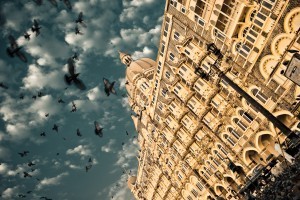 Four days later, I walked into the cubicle of a senior manager for my location, with the suppressed excitement of a child who is finally going on a summer holiday.
Four days later, I walked into the cubicle of a senior manager for my location, with the suppressed excitement of a child who is finally going on a summer holiday.
“Give it a little thought”, said my manager
“I have”
“What do you want, just let me know. Do you want a promotion? A transfer? A change of job role?”
“I want to quit”
My manager shrugged.
I walked out with a smile no one could wipe off my face, and I knew for a fact that many did want to do that.–
It was in the wee hours of the morning that can neither be called night, nor morning, when I reached the Gateway of India. The Gateway of India was the place from where the British left India, when their rule in India came to an end. And this is where I wanted to celebrate my freedom too, doing the two things I loved the most: experimenting with pictures, and exploring the city I lived in.
As the sun started to rise in the sky, a group of elderly people gathered in front of the Gateway, in a circle. And to my big surprise, they all started laughing. Laughing, non-stop. No one else around me seemed to be surprised. “It’s the laughter club of Mumbai”, explained someone.
It was infectious. I had a wide smile on my face, breaking into a laughter. I was now a freelance photographer and writer, out to explore the world, one city at a time, starting with Mumbai.
About the Author: Arti Agarwal is a creative professional. She is a freelance photographer, writer, artist and designer and the founder of –en-light-art-, her new venture. She finished her Bachelor of Architecture from IIT (Indian Institute of Technology) Roorkee, where she caught the creative bug to last a lifetime.
The post India: Lost and Found in Mumbai appeared first on We Said Go Travel.
July 28, 2013
South Africa: The ‘Berg
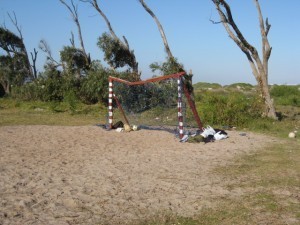 Two years ago I boarded a plane by myself to South Africa. I ignored my friends who called me crazy, and as much as I appreciated the concern from my family, I did not hesitate when I pressed the confirm flight button.
Two years ago I boarded a plane by myself to South Africa. I ignored my friends who called me crazy, and as much as I appreciated the concern from my family, I did not hesitate when I pressed the confirm flight button.
Two weeks later, I found myself staring out the airplane window, minutes before take-off, wondering if…”maybe I was crazy?” It took all of two minutes, and the plane to take-off, for me to convince myself this was the exact thrill I needed after graduating University.
With 25 hours of travel time ahead of me, I started to think of what was in store for me in the next four months. To be honest, I only knew of a few things: I’d be living with 18 to 25 strangers from all around the world, in a small living space, and that I’d be volunteering in a township coaching soccer to underprivileged children during the 2010 World Cup. I pinched myself, but I was still hundreds of feet in the air, on my own, to take on whatever the motherland had to offer.
It was May 15, 2010 when I found myself walking down the arrival hall in the Cape Town International Airport in hopes of meeting someone from the volunteer program to pick me up and take me to my new home for the next few months. It was not even 7 in the morning and the sun beaming through the airport windows was warm against my skin. Distracted by the view outside, I nearly missed the petite woman calling my name over and over. “Jenna? Jenna?” I walked up, and said, “ I’m Jenna, and I have made it.”
One Month Later
It didn’t take long for me to settle in, meet the other volunteers, and make myself at home in a small town outside of Cape Town, known as surfer’s corner, or the ‘Berg, or Muizenberg. The ‘Berg was a small paradise. I lived within walking distance to the beach that was surrounded by breathtaking views of mountains that seemed to go on forever. It also didn’t take long for the 25 volunteers, to become like a family. We might have all been in different volunteer programs, some teaching, some surfing, and some coaching, but we all came to the ‘Berg for one reason…the kids.
The first time I made the 45-minute walk into Capricorn town-ship to the school where I’d meet the boys I’d be coaching for the next four months, I went into shock. I had imagined what town-ships looked like, but when I was standing in the streets right in the middle of one, I couldn’t help my emotions. Garbage was piled high with kids climbing to the top, the water where a few were swimming looked more like a swamp, and the amount of stray dogs roaming around, sent chills up my spine. Then out of nowhere, a young boy came up to me and grabbed my hand. I snapped out of my daze, and looked down at the boy. Although, he was missing his front teeth, he had the biggest smile I had ever seen. He looked up and said, “Teacha, are you the next football coach?” I said yes, and before I knew it he was yelling, “the coaches are here, the coaches are here.”
I was home.
At 2 pm each afternoon the four coaches would make the long walk to the school where we would grab the limited amount of equipment, and the boys to walk them to the field where we practiced each day. The field looked more like a beach, covered in sand with two wooden nets barely standing together at each end. However, this field was where these 11-year-old boys could forget about running home before dark because it was too dangerous to be alone after 5 pm, or where they wouldn’t have to worry about being bullied or pressured into drugs, this field is where these boys were allowed to play soccer, and just have fun. For a lot of these boys, this sandy field was where they dreamt of one day playing for Bafana, Bafana.
Some may believe freedom comes when you are alone on a beach with nothing, but the sound of waves in the background. Or maybe you’re at peace in the comfort of your own home. But if someone told me I would feel the most free in the middle of one of the most dangerous townships in Cape Town, South Africa, on a sandy field coaching boy’s soccer, I would never have believed them.
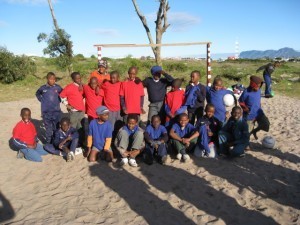 Two years later, I still hold the ‘Berg close to my heart. The boys I coached became like family. Most of them struggling to stay away from the pressures of joining the gangs within the township, or some having to take care of their younger siblings because that’s all they had. With struggle comes true strength, and the amount of strength and fight these boys had became an inspiration for me. I wasn’t just coaching a soccer team; I was apart of something bigger that summer. As the World Cup took over South Africa, there was complete joy on every little boy’s face as they put on their cleats, to play the nation’s national sport. When we took the field to scrimmage with the kids, I have never felt more alive. These kids who have seen family members be shot, or go days without eating, or have next to nothing had taught me what true happiness is…and that’s to enjoy and take advantage of what you do have. And that’s freedom. And I just so happened to find my freedom a thousand miles from home in a middle of a dangerous township in a small town known as. ‘the ‘Berg,’
Two years later, I still hold the ‘Berg close to my heart. The boys I coached became like family. Most of them struggling to stay away from the pressures of joining the gangs within the township, or some having to take care of their younger siblings because that’s all they had. With struggle comes true strength, and the amount of strength and fight these boys had became an inspiration for me. I wasn’t just coaching a soccer team; I was apart of something bigger that summer. As the World Cup took over South Africa, there was complete joy on every little boy’s face as they put on their cleats, to play the nation’s national sport. When we took the field to scrimmage with the kids, I have never felt more alive. These kids who have seen family members be shot, or go days without eating, or have next to nothing had taught me what true happiness is…and that’s to enjoy and take advantage of what you do have. And that’s freedom. And I just so happened to find my freedom a thousand miles from home in a middle of a dangerous township in a small town known as. ‘the ‘Berg,’
About the Author: My name is Jenna Gonneau. I am prone to wander ever since booking my first solo trip to South Africa in 2010. Since then I have been back to Africa, camping through seven different countries, then backpacked through SE Asia for half a year. I am a writer who is currently planning my next adventure…
The post South Africa: The ‘Berg appeared first on We Said Go Travel.
Awka in Nigeria: A Good Place of Independence
 Awka in Nigeria: A Good Place of Independence
Awka in Nigeria: A Good Place of Independence
Introduction
Independence is to be free from outside control; not subjected to another’s authority. Awka is a good place that worth being because of the benefits attributed to it. All who travelled there for holidays testified and are still testifying on the good platform of the area.
What makes Awka Unique Place for Travellers?
Food is the fundamental thing that man needs to continue in his existence. This can make a dry bone turn over a new leaf within a short time. Awka has a fertile land for agricultural growth. Food scarcity is a dead talk in this part of the world.
Another thing that is special is the skill display in this society. The community has men who are skilled in blacksmithing. Without education, these men can manufacture many tools on their own. This is no tall story at all. Most times I cherish going to the workshops and admire the neat works of the craftsmen. To my surprise, do you know that these men produce guns using the local forging process?
This area is rich in cultural and tradition practices. The traditions of many communities of the world had been washed up. This is not so in Awka. The area booms in displaying their traditions. I really enjoy some of these, mainly during their cultural festivals. Their attire and masquerade parade is a notable one.
The community is a good business area. There is competition in the business establishment around the area. Because of this, goods are sold at cheaper price. Whenever I travel to this part of Nigeria, I like buying everything I need. The talk of “if you do not buy if from my shop, you will not see it in any other place” is an outdated one.
Awka has well furnished hotels where one can go and relax. I feel as if I am in paradise any time I enter any of these hotels. Examples of the notable ones are: Queens Suites; White View; and Rest Point. These are maintained to the standard. The way the workers treat her customers is outstanding.
It is well known that wildlife has gone into extinct in different parts of the world. Many have not tested bush meats since birth. In Awka, this is at all and sundry’s reach. These bush meats are sold at many joints in the town. They have unique tests that make them what they are. Honestly, you need to travel to this part of the world to enjoy the good breeze.
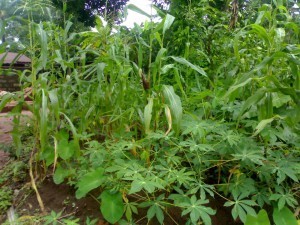 Another outstanding thing about Awka is that it has many fresh waters that house many aquatic animals. One of the aquatic animals I like enjoying in that place is the fish. They have special qualities in them that make them singled out from other fishes. I feel free any time I eat these fishes. This is different from those bought from fish farmers. Those from fresh water are matured and have all that nature gives to it. There is no room for having second thoughts on whether to go to this society to exercise your freedom. You really need it.
Another outstanding thing about Awka is that it has many fresh waters that house many aquatic animals. One of the aquatic animals I like enjoying in that place is the fish. They have special qualities in them that make them singled out from other fishes. I feel free any time I eat these fishes. This is different from those bought from fish farmers. Those from fresh water are matured and have all that nature gives to it. There is no room for having second thoughts on whether to go to this society to exercise your freedom. You really need it.
Today, we construct artificial rivers in the name of swimming pools. But, listen let me tell you, it is not so in Awka. In some cases, people go to these swimming pools and die in them when they jump and break their heads on the cemented floor. There are well maintained rivers in Awka where one can go and swim at ease. I feel highly independent any moment I touched this part of the town.
Conclusion
To travel is another means of freedom. There are many good associated with travelling as explained above.
About the Author: Mike Uzochkwu: I am a fourth year undergraduate student in Nnamdi Azikiwe University, Nigeria. I am from Anambra state, Nigeria. Find him on Facebook.
The post Awka in Nigeria: A Good Place of Independence appeared first on We Said Go Travel.
Sri Lanka: Free to be Me
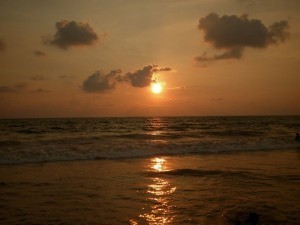 A never ending sky. The grey-black clouds speak of a dusk, yet to arrive. The sun is still visible. But this is not the arrogant, scorching sun of noon; it is a gentle, mellow light that paints its surroundings in vibrant hues. Sometimes, you may see a boat, dot the horizon. An infinitesimal entity, gliding towards, a seemingly infinite space.
A never ending sky. The grey-black clouds speak of a dusk, yet to arrive. The sun is still visible. But this is not the arrogant, scorching sun of noon; it is a gentle, mellow light that paints its surroundings in vibrant hues. Sometimes, you may see a boat, dot the horizon. An infinitesimal entity, gliding towards, a seemingly infinite space.
This is the seaside town of Mount Lavinia, Sri Lanka. – Sri Lanka is a tiny island nation, nestled in the Indian Ocean. It’s lush, varied landscape, belies its very size. Mountainous terrain and an endless beach, lie within a few hundred kilometers of each other.- Here, at the Mount Lavinia beach, you feel at peace. A peace that was, once, hard to envision, in a country marred by a civil war, spanning over twenty five years.
The golden sand trickles through your toes. You long to build sand castles the way you did when you were small. And here, you can. Because, this is a place where you do not mind what others may think. Here, you are free to be your innermost self. And nostalgia is banished; as you pick up little shells to decorate your castle, and dig deep into the sand to build your own moat. You know that within a few minutes, a few hours or within the span of a day, the inevitable will come to pass, and the waves will carry your castle away to sea; but on this beach, it is only the here and now that matters.
The ash blue ocean beckons, enticingly. Captivated, some wade into the water, where white tipped waves break across their feet. The more intrepid, swim out to sea. Shrieks of glee can be heard at times, as the waves catch people unawares. Some, who have come to the beach fully clothed, are drenched, due to the unpredictability of the ocean. Yet, seemingly no one cares. The worries of the boardroom and the burdensome workloads of everyday life, are left far, far behind. The vastness of the ocean holds a compelling magic that somehow, seems to wash life’s trivialities away.
The tall, coconut fronds swish and rustle to the tune of the inescapable wind. Lightly plaited hair and loosely tied pony tails, cast their hair grips asunder, and fly wildly, unrestrained. Coupled with sea spray, hair tastes salty, here, as it swirls around your face. Free, at last.
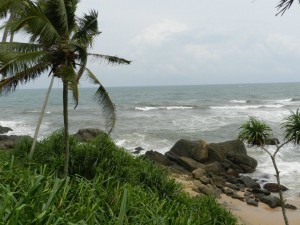 A few, wooden fishing boats lie quietly on the sand. They, the children of the night, are idle, now. But in a few hours, fishermen, dressed in loincloths or shorts, will be seated in these boats, with their nets cast out. The livelihood of these fishermen, who live in thatched huts on the beach itself, is almost entirely dependent on the bounties of the ocean. Unfettered with material possessions; they sail the seas, with a simple trust, that is touching to see.
A few, wooden fishing boats lie quietly on the sand. They, the children of the night, are idle, now. But in a few hours, fishermen, dressed in loincloths or shorts, will be seated in these boats, with their nets cast out. The livelihood of these fishermen, who live in thatched huts on the beach itself, is almost entirely dependent on the bounties of the ocean. Unfettered with material possessions; they sail the seas, with a simple trust, that is touching to see.
Never has Blake’s words seemed more appropriate than at the Mount Lavinia beach:
“To see a world in a grain of sand,
And a heaven in a wild flower,
Hold infinity in the palm of your hand,
And eternity in an hour.”
About the Author: My name is Layanthi Tennekoon. I qualified as an accountant; but now, I engage in freelance writing, because that’s something I truly love to do. It also means, that this way, I get to spend more time with my little son, who means the world to me. I like reading, learning new skills and meeting new people, as each in their own way, gives me a fresh perspective on the world.
The post Sri Lanka: Free to be Me appeared first on We Said Go Travel.
July 27, 2013
Japan: Forca Brasil
 It wasn’t until the Japanese cover band performed “Stand by Me” that the Brazilian flags were raised, a blaze of electric yellow, green and blue waving gloriously against the clear skies of Nagoya’s late afternoon sunshine. Seated on a picnic table in Japan’s Central Park with a plate of yakitori, I watched as sixty or so men, women, and children dressed in Brazilian colors, some with painted faces and many more with flags, filtered onto the dance floor. As they linked arms and swayed, hundreds of Japanese passersby, perusing through the area’s renowned high end fashion strip, paused to watch.
It wasn’t until the Japanese cover band performed “Stand by Me” that the Brazilian flags were raised, a blaze of electric yellow, green and blue waving gloriously against the clear skies of Nagoya’s late afternoon sunshine. Seated on a picnic table in Japan’s Central Park with a plate of yakitori, I watched as sixty or so men, women, and children dressed in Brazilian colors, some with painted faces and many more with flags, filtered onto the dance floor. As they linked arms and swayed, hundreds of Japanese passersby, perusing through the area’s renowned high end fashion strip, paused to watch.
Six months into my eighteen-month stay in Nagoya, Japan, during which my husband was to work and I, having left my corporate HR job, was to write, I was used to being one of the only non-Japanese of thousands on any given day. I had done my research prior to packing up my Detroit home and moving halfway around the world, and knew that in a country of nearly 128 million people, 98.5% were of Japanese ethnicity, followed by 0.5% Korean and 0.4% Chinese.
So where were all of the Brazilians coming from? And why were they carrying flags?
Thankful for modern technology, I quickly Googled “Brazil holidays”. Nothing. A soccer game? Nada. Brazilians-living-in-Japan day? Nope. As the song reached its conclusion I noticed some of the women had tears in their eyes. Many people were holding signs that read “Força Brasil”. But it wasn’t until several figures walked past in the white plastic protest masks I had seen on news the world over that I knew the gathering was political. Rather than speculate, I made my way through the crowd to learn more.
I headed towards a kind-looking man about my age who had a flag wrapped tightly around his shoulders.
“Hello!” I shouted over the music. “Do you speak English?” We were in Nagoya, after all, where very little English was spoken.
“Ha! Do I speak English!” He elbowed his friend, who laughed. Did that mean yes?
“What is going on here today? I am interested to know.”
“Today, here, well….” He trailed off into a series of Portuguese words. He then flagged over a friend from the dance floor to serve as interpreter.
A woman with long beautiful hair and high arched eyebrows, also in her early thirties, communicated the reason behind the patriotism.
“In Brazil is bad right now. We love Brazil as our country but we move – to here, to U.S., to Europe – for better education, for wages, for healthcare. The government, they hike fares, they spend millions on the World Cup and we Brazilians, we just grow poorer. The peaceful protests today, is to support the movements that is occurring in Brazil; we will always fight for our country. It is sad, because we want to stay in the country we love, you know?”
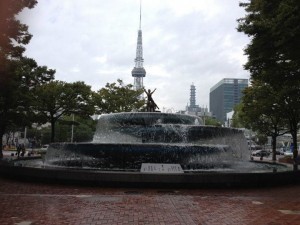 I nodded, thinking of my own family’s history and sacrifices. My father’s paternal grandparents had fled Hungary for a better life in America at the turn of the twentieth century, and my mother’s paternal grandparents had made a harrowing, blind voyage from conflict-ridden Macedonia to Detroit in 1919. If it weren’t for the courage of my ancestors, for their faith in the opportunity and prosperity America afforded, I may never have known the independence and freedom of the life I had grown to love, a life that had taken me all the way to Japan.
I nodded, thinking of my own family’s history and sacrifices. My father’s paternal grandparents had fled Hungary for a better life in America at the turn of the twentieth century, and my mother’s paternal grandparents had made a harrowing, blind voyage from conflict-ridden Macedonia to Detroit in 1919. If it weren’t for the courage of my ancestors, for their faith in the opportunity and prosperity America afforded, I may never have known the independence and freedom of the life I had grown to love, a life that had taken me all the way to Japan.
But how had so many Brazilians come to live in Japan, a country notoriously tight-lidded on immigration?
I was surprised to learn I had it backwards – it was the Japanese that had first moved to Brazil. About a century ago, the woman explained, many Japanese migrated to Brazil to work as labor on farms. They stayed and raised families, and when in the 1990s the Japanese government was looking for laborers, the Japanese-Brazilian population began returning to Japan to work in industries. As my great-grandparents had done, in a time of economic hardship, these people had bravely left their country in search of a better future.
And what did força mean?
Força meant force. It stood for strength, passion, energy, power. It stood for the effort of the people. It also meant “hang in there.” I knew what it was like to feel like a stranger in a strange land, far from the place you called home. Like the group in the park that day, my ancestors, through their bravery, had afforded me the freedom, the choice, to move or to stay. I followed the woman into the circle, knowing that while change does not happen overnight, the more voices that join the movement, the louder those voices are heard.
About the Author: Shannon Guerreso is a writer, an inventor, an entrepreneur and a world traveler. A Detroit native, she currently resides in Nagoya, Japan, where she is working on a collection of short stories and a variety of narrative nonfiction. She blogs about her life in Japan and other travel experiences at sashimiandthecity.blogspot.
The post Japan: Forca Brasil appeared first on We Said Go Travel.
Jewish Exponent Article on Jewish Celebrations
(Click on the image to open in a new window)
The post Jewish Exponent Article on Jewish Celebrations appeared first on We Said Go Travel.
Disney World: To infinity…and beyond!
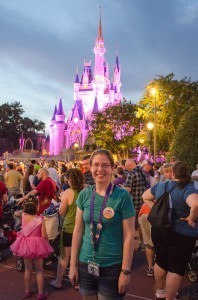 After a grueling six-month search, my boyfriend Zachary had finally landed a great job on the East Coast, about 45 minutes from where I work. That was a welcome change from the three-thousand-mile distance between us during our two years after college, when he attended grad school in California and I started my career in Massachusetts.
After a grueling six-month search, my boyfriend Zachary had finally landed a great job on the East Coast, about 45 minutes from where I work. That was a welcome change from the three-thousand-mile distance between us during our two years after college, when he attended grad school in California and I started my career in Massachusetts.
To celebrate our reunion, we planned a last-minute trip before Zachary started work in two weeks. We decided to experience Walt Disney World in all of its splendor. Neither of us had visited as children, even though we had seen every Disney movie countless times. It would be a great last-hurrah to our childhoods and a good launching point into our now-fully-adult working lives.
Since we only had five days before our desired departure date, we needed to move quickly on trip planning. We brought out our type-A planning skills and easily put together a vacation package through the Walt Disney World website.
Because Disney makes planning a trip so effortless, we had the freedom to plan experiences, not logistics. The only thing left to do was scour travel guides and pack our 5 days and 4 nights to maximum capacity. Our rallying cry became, “To infinity…and beyond!” from Toy Story, my all-time favorite Disney movie. How many rides, meals, and experiences could we cram into this trip? We were aiming for infinity.
To achieve this goal, we made heavy use of “touring plans” at the back of our heavily-thumbed-and-annotated Unofficial Guide to Walt Disney World. Using data collected from years of research in the parks, touring plans are itineraries that maximize the time spent experiencing rides and attractions while minimizing waiting times. Our engineering hearts simply drooled at the possibilities held in these heavily-optimized schedules.
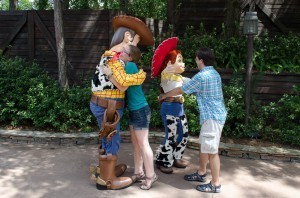 However, our best-laid plans were foiled half-way through our first morning as we careened off Big Thunder Mountain (stop number nine on our “Magic Kingdom in a Day” touring plan). We rounded a corner and suddenly spotted Woody and Jessie from the Toy Story movies, in a rare pop-up character stop in this tucked-away corner of Magic Kingdom.
However, our best-laid plans were foiled half-way through our first morning as we careened off Big Thunder Mountain (stop number nine on our “Magic Kingdom in a Day” touring plan). We rounded a corner and suddenly spotted Woody and Jessie from the Toy Story movies, in a rare pop-up character stop in this tucked-away corner of Magic Kingdom.
Here they were, the loyal Woody and the spunky Jessie, my favorite Disney characters and childhood role models come to life…and without even thinking, I said goodbye to our plans and our timelines, spun around to face Zachary and blurted, “I NEED TO SAY ‘HI,’ TO JESSIE AND WOODY NOW.”
As we waited in the ubiquitous Disney World line, I couldn’t stand still. I checked the settings on my DSLR for the tenth time, making sure I was ready to capture the big moment. What has gotten into me? I wondered. The clock was ticking — every minute we spent in line was another minute we weren’t on a ride or meeting our lunch reservations. But I didn’t care. All that mattered to me was that I meet two of my childhood heroes.
As the line moved forward, I watched the children take their turns meeting Woody and Jessie. While some were a bit shy, most interacted as they would when meeting an old friend — big excited eyes, a huge smile on their faces, and arms outstretched to welcome these life-sized characters. They weren’t worrying about the return time on their Fastpass for Space Mountain or their 1:05pm lunch reservations. They were totally in the moment, free to make this memory as good as it could be.
 Seeing the children made me realize that I was trying to experience Disney World through an adult’s eye, with plans and expectations for our experiences. But I think Walt Disney wanted all visitors, young and old, to see his world through a child’s eye. On the surface, it seems like Disney World is everything but spontaneous and unstructured, but Zachary and I found that the structure actually freed us from worrying about the logistics. We were as free as kids to discover the magic around the next corner.
Seeing the children made me realize that I was trying to experience Disney World through an adult’s eye, with plans and expectations for our experiences. But I think Walt Disney wanted all visitors, young and old, to see his world through a child’s eye. On the surface, it seems like Disney World is everything but spontaneous and unstructured, but Zachary and I found that the structure actually freed us from worrying about the logistics. We were as free as kids to discover the magic around the next corner.
After our meeting with Jessie and Woody, Zachary and I still stuck to our touring plans. But instead of adhering to them religiously, we saw them more as outlines for our experience. Our plans were a freeing structure that supported soaking up all the magic of Disney World, even if that meant missing a ride or two. That’s why, when we ran into Buzz Lightyear in Tomorrowland later in the day, we didn’t hesitate to stop and say, “Hi.”
“To infinity…and beyond!” indeed.
About the Author: Leslie Gerhat is an engineer, reader, writer, and explorer. She shares her thoughts and ideas with the world on her site, Explorer Leslie.
The post Disney World: To infinity…and beyond! appeared first on We Said Go Travel.
We Said Go Travel
We Said Go Travel is a global community of over sixteen hundred writers with articles from every continent.
Stories are shared with photos and video from a perspective of the transformative power of travel. We Said Go Travel has hosted live and online events as well as travel writing contests around the world. ...more
- Lisa Niver's profile
- 57 followers




